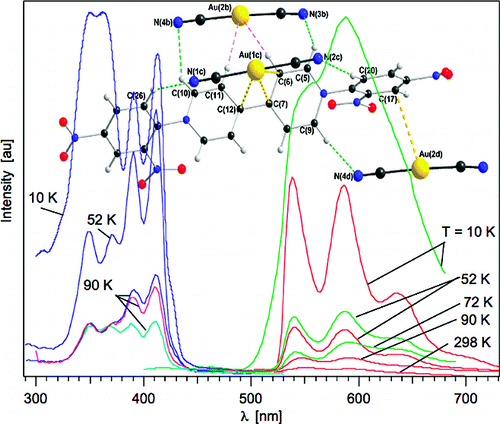-
Photophysical Properties of {[Au(CN)2]−}2 Dimers Trapped in a Supramolecular Electron-Acceptor Organic Framework

A.S. Abouelwafa, C.E. Anson, A. Hauser, H.H. Patterson, F. Baril-Robert, X. Li and A.K. Powell
Inorganic Chemistry, 51 (3) (2012), p1294-1301


DOI:10.1021/ic201109u | unige:18374 | Abstract | Article HTML | Article PDF

Dicyanoaurate reacts with the organic acceptor molecule, 1,1′-bis-(2,4-dinitrophenyl)-4,4′-bipyridinium, DNP, to form a supramolecular complex with the general formula {[Au(CN)2]2DNP}·4H2O. The complex was characterized by X-ray crystallography, and its photophysical properties were investigated in the solid-state. Although the initial (DNP)Cl2 compound does not show photoluminescence behavior and the dicyanoaurate shows photoluminescence only in the UV range, the resulting supramolecular complex displays two simultaneous, essentially independent, photoluminescence bands in the visible range originating from individual contributions of the DNP unit and the dicyanoaurate dimers. This unusual simultaneous photoluminescence behavior displayed by both the dicyanoaurate donor units and the redox-active 4,4′-bipyridinium acceptor have lifetimes of 0.5 μs and several hundred μs, respectively.